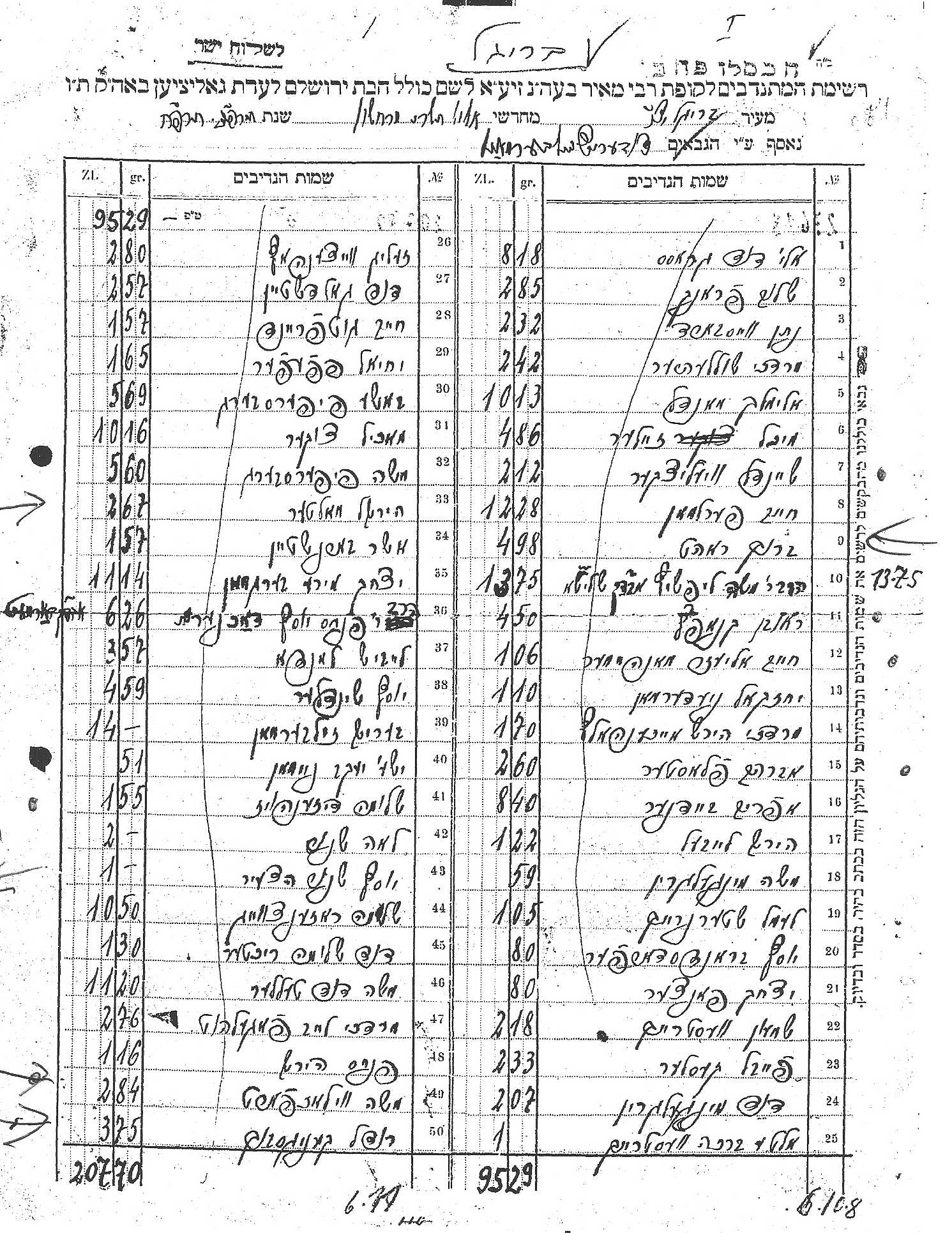|
which shows the inventory of records by town. |
|
From the mid-1800s, there was a Galizianer community in Jerusalem, supported largely by family and landsmen in Europe. Collections were taken by gabbaim once, twice, even four times a year, depending on the size of the community and the industriousness of the gabbai and meticulous records were kept of those collections.
For the most part, the collection records listed the name of the head of the household and the amount contributed, but occasionally when two or more people from the same town had the same name, some additional information would be added, such as the father's name or the wife's name. In one instance, I was able to use this information to determine whether a particular Hersch Leib (1835-1880) was Zvi Aryeh or Zvi Yehudah, thus settling a decades-long family debate.
Unfortunately the records kept in Jerusalem were largely lost with
the fall of the Old City and of course the Galician copies were lost entirely.
However, the records for the period ~1924-1939 - it varies from town to
town - survived and are kept in a filing cabinet in a kollel in Jerusalm's
Mea Shearim neighborhood.
|
which shows the inventory of records by town. |
|
|
The value of these records is in the testimony to the fact that a person lived in a particular town at a particular time, and you can occasionally induce when a person died or moved away, when he disappears from the collection records. You can also follow a person's fortunes, as his contributions increase and decrease over the years. Occasionally, the collection records will include a personal letter from someone in Galicia, asking that the community in Jerusalem offer prayers for family members and these letters can be of great sentimental and genealogical value. On the right, you can see a sample page of records. Most gabbaim used Hebrew script. A few towns use Latin letters. It is possible to arrange to search and copy these fragile documents, giving the family researcher an opportunity to learn something about people who may have been left in Europe. For further information, contact Israel Pickholtz, Solutions. |
 |